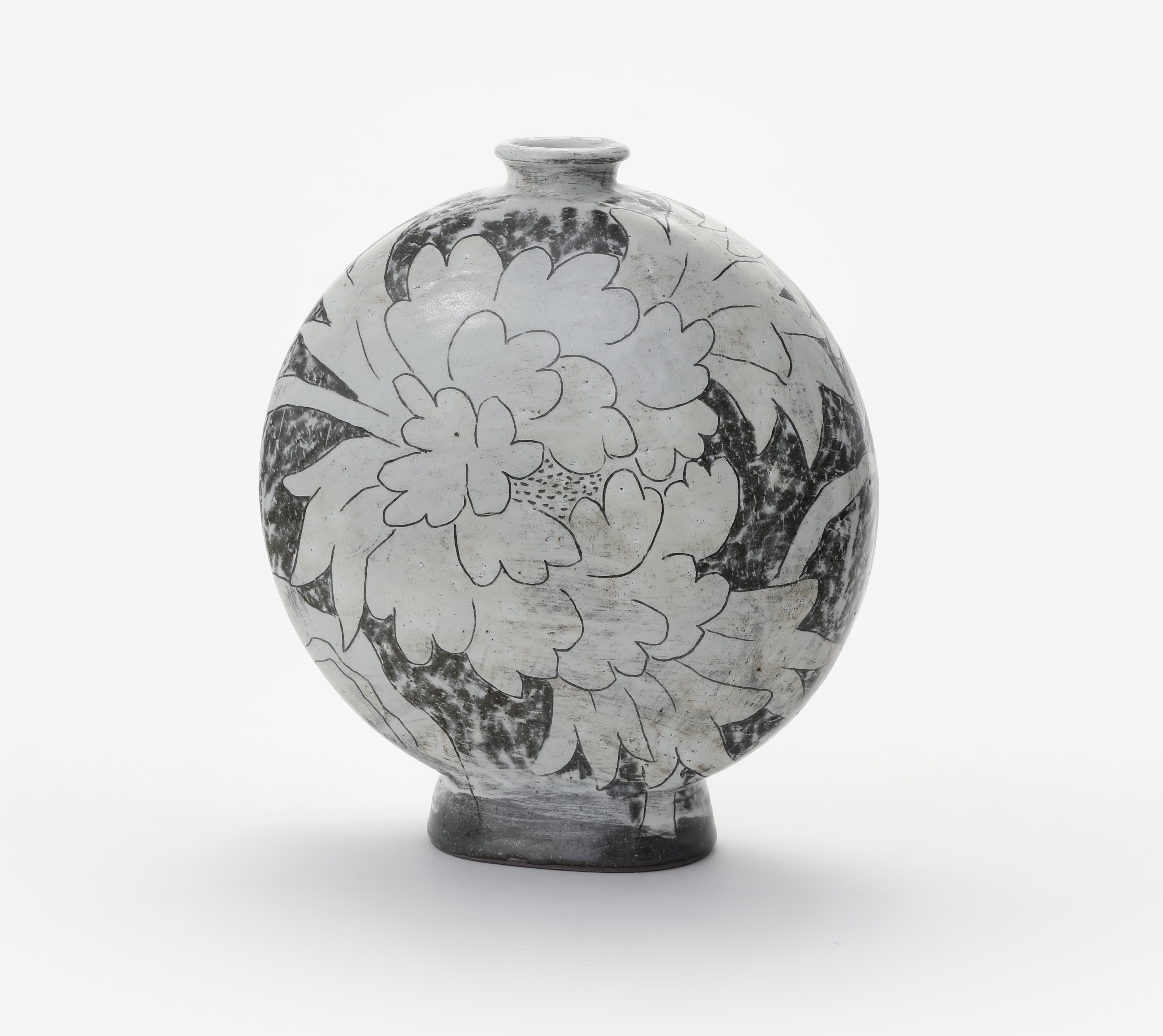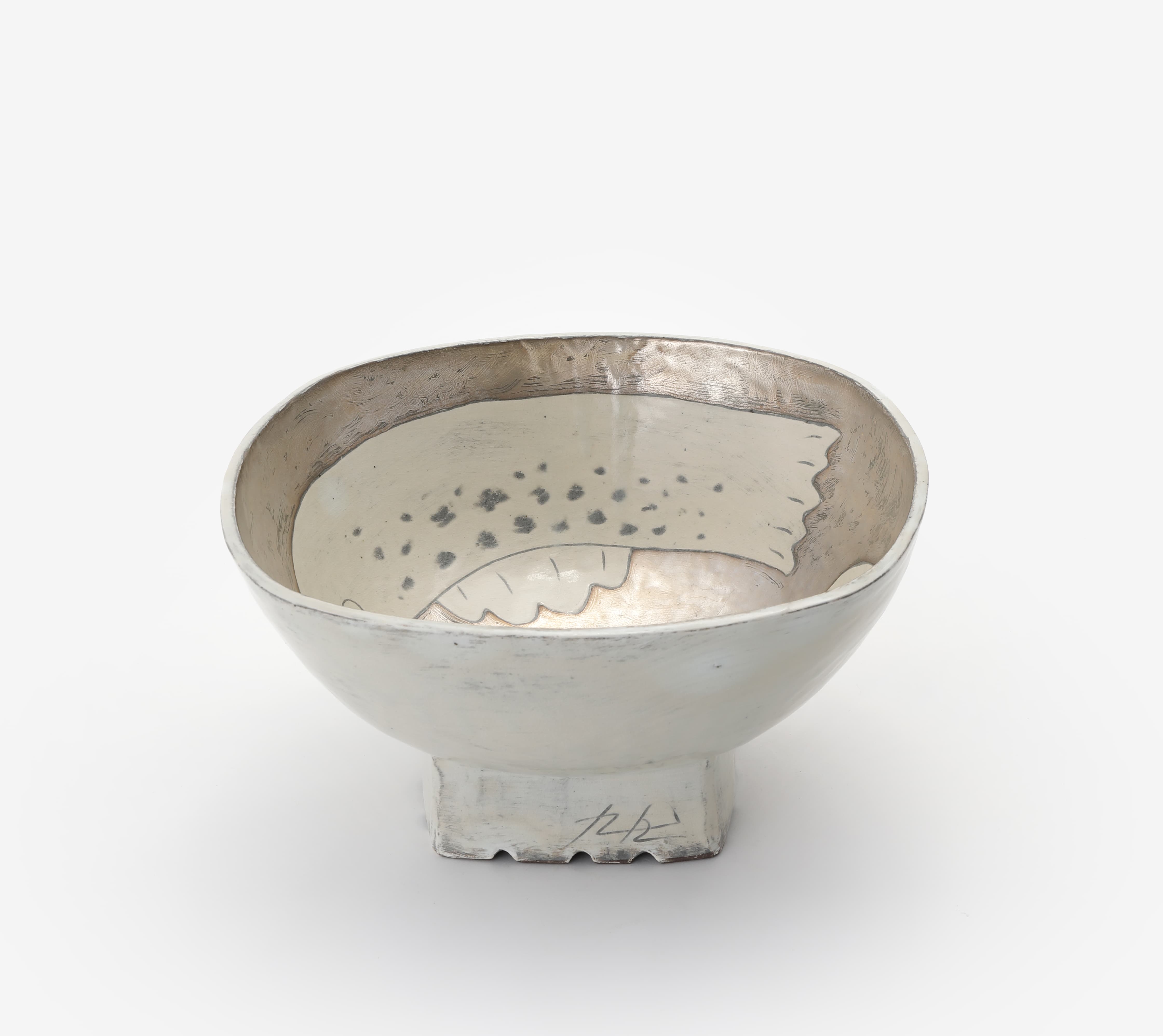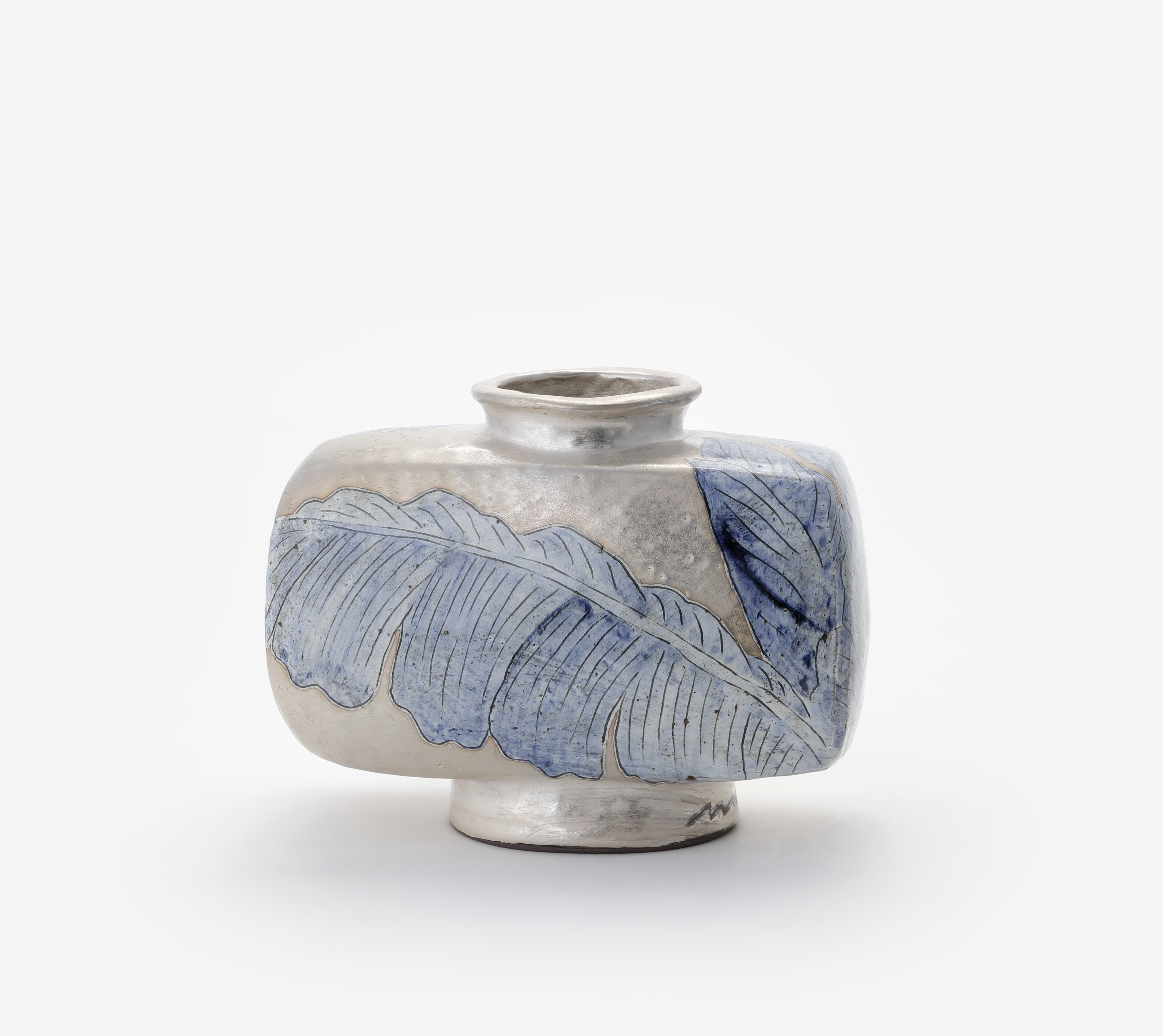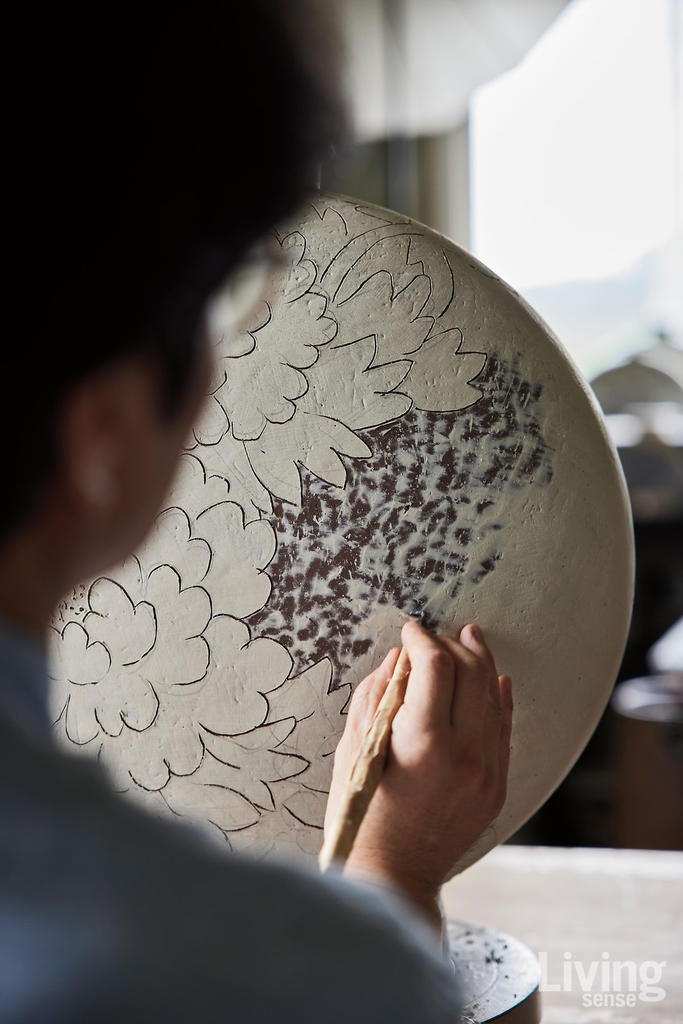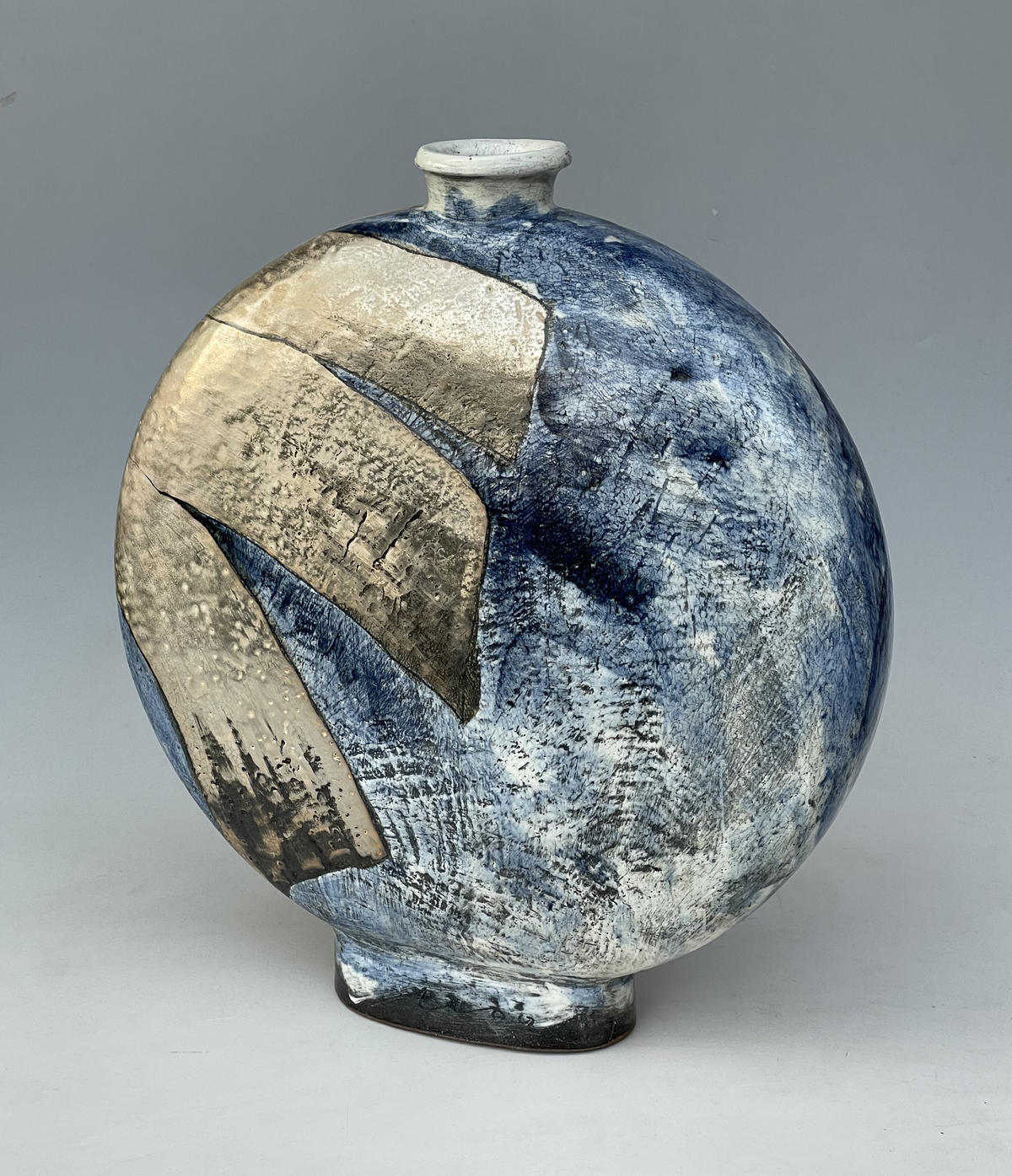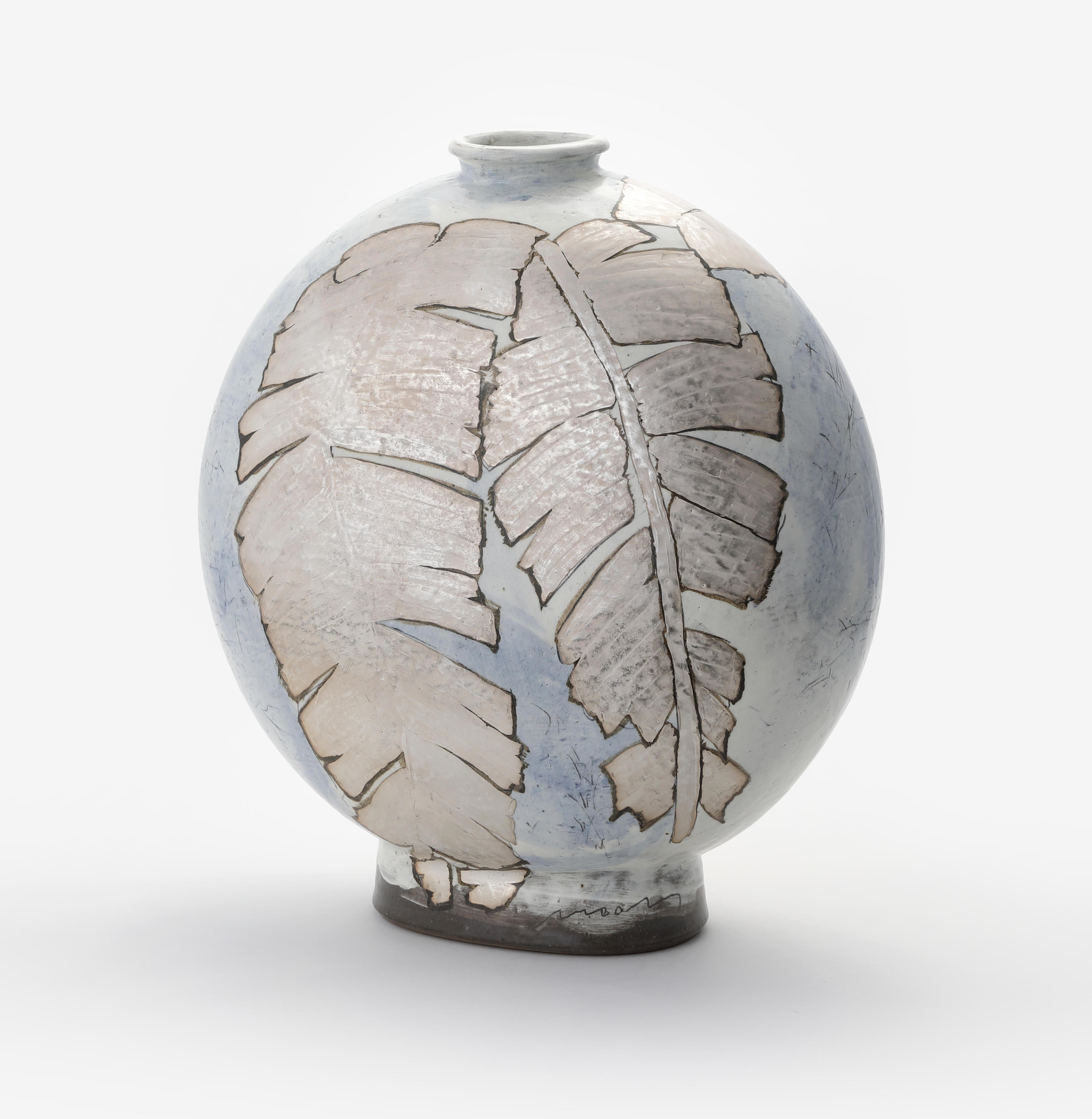
Buncheong ceramics, produced from the late 1300s to the 1500s, earned their name a posteriori during the mid-2000s. It was not until the late twentieth century, through significant exhibitions, that their genuine artistic value gained widespread recognition. The rise of buncheong as a model of craftsmanship came about in response to the threats posed to the premodern craft by industrialization during the 1800s. Buncheong’s position necessitated a blend of archaeological research and artistic creativity simultaneously.
Following the 1960s, the revival of buncheong pottery took shape primarily through two approaches. One approach was rooted in upholding the buncheong tradition and faithfully reproducing its masterpieces. This largely catered to foreign tourists, particularly those from Japan. Skillful artisans committed themselves to maintaining these time-honored techniques. Concurrently, another group seeking a novel manifestation of contemporary ceramics surfaced, characterized by experimentation with traditional buncheong methods. This transformation was spearheaded by YOON Kwang-cho (born 1946) during the 1970s. Yoon drew inspiration from Western sculpture and his academic background in art education, thus initiating a fusion of tradition and innovation. This fusion not only breathed new life into buncheong pottery but charted promising trajectories for its future evolution.
Over the past few decades, the concept of craftwork and the definition of craft have undergone significant changes in Korea. The line distinguishing art from craft has become increasingly blurred, leading ceramists such as HUH Sangwook (born 1970) to create works that seamlessly blend functionality and artistic expression (fig. 1). Huh, one of the finalists for the 2022 Loewe Foundation Craft Prize, vividly exemplifies the challenges artists encounter when they navigate traditional techniques and their applicability in contemporary contexts. In a 2019 interview, he talked about these complexities:
The joy of crafting buncheong ceramics was undeniable, and I yearned to continue, but the challenge lay in transforming it into my unique expression for the twenty-first century. Initially, uncertainty clouded my mind, unsure of which direction to take, but gradually, I embraced the exploration of novel approaches. I was determined to forge my own path and unearth my artistic identity. It was during this very process that I chanced upon a silver-glazed technique.1 (fig. 2)
His four works in Perfectly Imperfect illustrate his earnest effort to embark on new artistic experiments while preserving the practicality and everyday functionality that give rise to the inherent beauty of buncheong ceramics (refer to “Beyond Borders,” in this publication). A flask-shaped jar, barrel-shaped bottle, and dip dish on view retain their traditional forms from the Joseon period. However, these pieces also seamlessly integrate into the contemporary everyday setting.
Huh applies both traditional and innovative techniques to imbue his vessels with a sense of temporality. By incorporating silver and deftly employing the carved-away (sgraffito) technique, he artfully merges the essence of the past and the promise of the future. The traditional technique connects to his elapsed time: as he delicately carves through the successive layers of white slip brushed onto the clay body, he uncovers the traces left behind (fig. 3). By applying silver paint to his buncheong ware and firing it again at around 1470℉ (800℃), Huh creates a fresh appearance for buncheong. This technique also produces a captivating effect—as the silver adheres and subsequently tarnishes on the surface, it seems to anticipate the passage of time in the days to come (fig. 4). This employment of conventional techniques and experimental materials in his buncheong works allows him to craft artworks that evoke a harmony of time’s progression within everyday functional objects.
JYP
Notes
-
PARK Jin Yeong, “Bakjibuncheong-e daehan saeroun siseon. doyega Huh Sangwook” [A new perspective on buncheong with carved-away (sgraffito). Ceramist Huh Sangwook], Wolgandoye [Monthly Ceramic Art] (July 2019): https://www.cerazine.co.kr/CeramicArt/News_View.asp?News_Num=26731&Class_Num=422.↑︎
